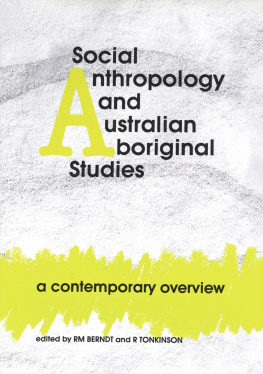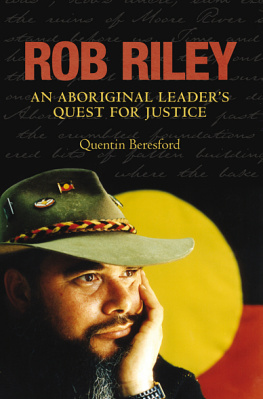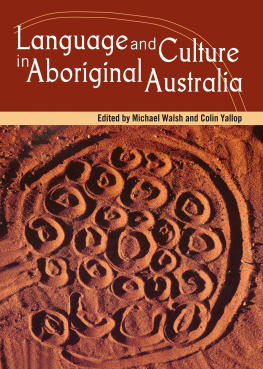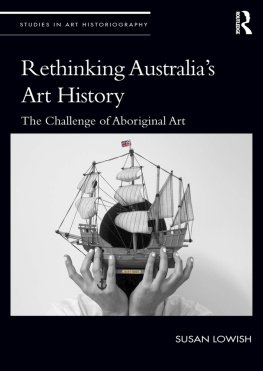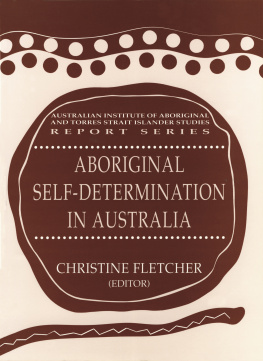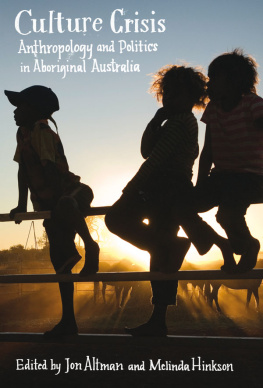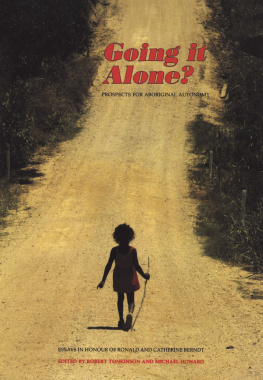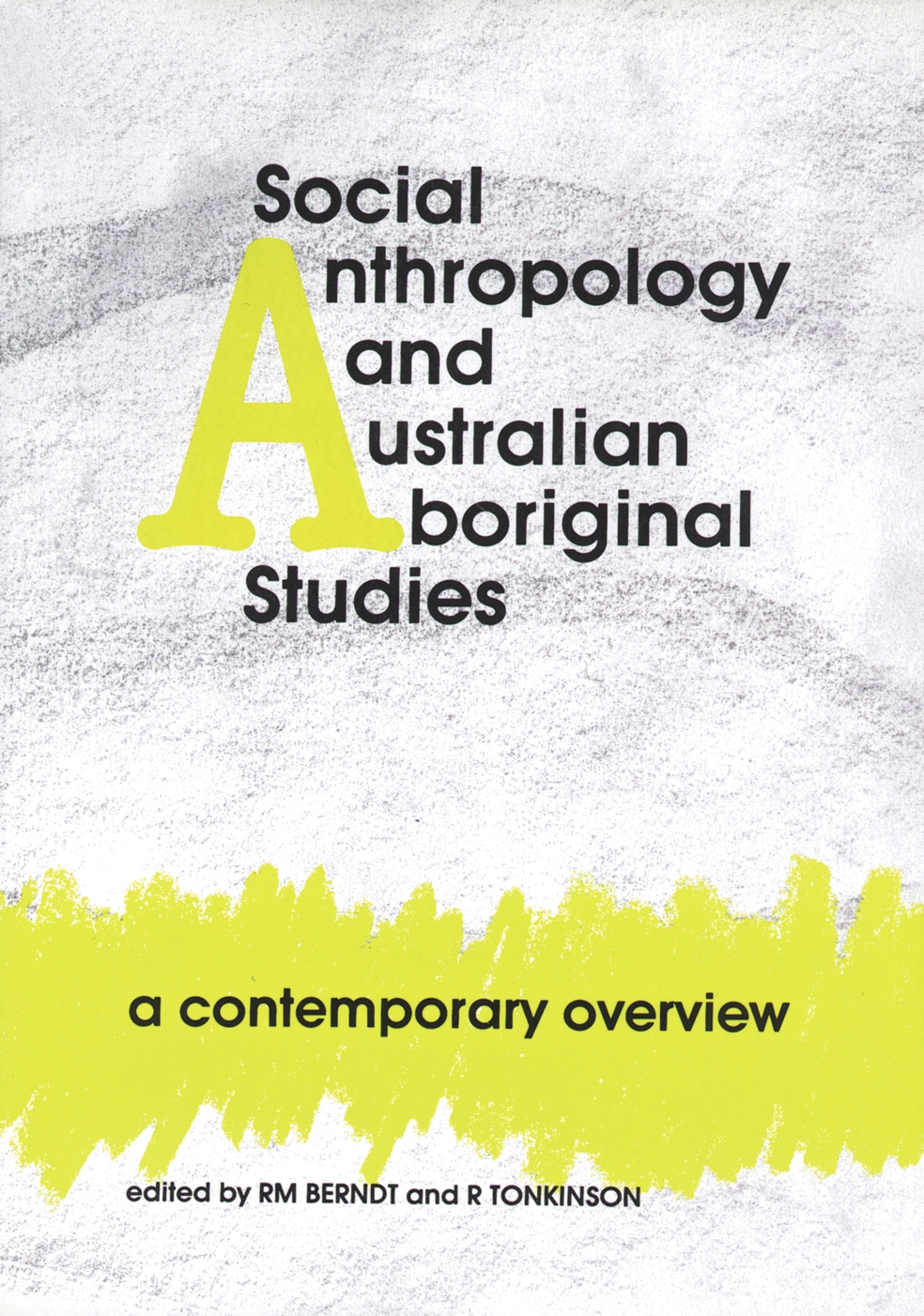Afferword
JOHN A BARNES
Taking stock and looking forward
I should begin with an apology, for the convener of the conference has assigned me a task for which I am quite hopelessly unqualified. An adequate apology would however take up far too much of the limited and precious time left to us. I shall therefore ask you to take my apology as read. I hope that my ignorance of the matters that I have to discuss is widely known, and that I may therefore be excused if I present an idiosyncratic interpretation of the past and receipe for the future. After what we have heard during the last three days there are no grounds for being surprised at even the most implausible manipulations of the evidence from the past to suit the demands of the present and future.
The unavoidable benchmark for taking stock, for comparing the present position of social anthropology in Aboriginal studies with what it was in the past, is the 1961 conference, as immortalised in the volume edited by Helen Sheils (1963). Weighing that book on one side of the scales against the collection of papers we have heard during the last three days is an encouraging experience. Although the 1961 papers seemed at the time they were presented to be stimulating and authoritative, by comparison they now look dull and uninformed. In retrospect, it is easy to be surprised at how little was known about Aboriginal society and culture in 1961. The cause of our surprise is obvious. The abundance of good work that has been done during the last twenty-five years has led us to take the present level of research activity for granted. The achievements of the period are particularly encouraging in the light of the decidedly gloomy forecasts made in some of the 1961 papers. As Ian Keen reminded us this morning, Meggitt, in his contribution to the 1961 conference, argued that in almost all the major areas of Aboriginal social structure, we have little information and, for practical reasons, no prospect of acquiring much more (Meggitt 1963, 215). Ron Berndt (1963, 222) criticised Meggitt at the time for being too pessimistic and perfectionist but I think that the achievements that have been gained by social anthropologists during the ensuing period have exceeded even what Berndt envisaged as possible in 1961.
In my view there are two main reasons for the research successes of the last twenty-five years. In 1961 virtually all the conference participants saw the task before them and their successors as a rescue operation. At the eleventh hour the Aboriginal heritage had to be recorded for the benefit of posterity before the Australian Aboriginal population became fully converted into Aboriginal Australians, indistinguishable from the rest of the inhabitants of the continent. There were several reasons for taking this view. It was a perception of the research task that came naturally to some of us but, more importantly, it was the politically expedient perception to promote if the Commonwealth government was to be persuaded to provide the funds for research that we all sought. Defined in these terms, the proposal for a greatly increased program of empirical research into all aspects of traditional life had a component of urgency which, so we hoped, would force the government to act swiftly before it was too late, before the last remaining speakers of unrecorded languages died (and preferably before they lost all their teeth), and before the memory of discontinued ceremonies faded beyond recall. By stressing the contrast between the traditional culture of the past and the rapidly changing social and cultural arrangements of the present, it was possible to give the impression that the proposed research program would not impinge in any significant way on the interests of the Aboriginal welfare bureaucracy which at that time was well entrenched in the Northern Territory and in all the states except Tasmania. It was only several years later, and only after a good deal of argument on both sides, that the welfare bureaucracy was able to secure representation on the Council of the Aboriginal Institute. By then, sufficient research under the Institutes auspices had been carried out to show that it was focusing its attention on aspects of Aboriginal life that were unlikely to be of immediate concern to welfare administrators who, in any case, might begin to look to the newly created Council for Aboriginal Affairs as the proper sponsor for their research requirements. Finally, by presenting the research task as a rescue operation, it was possible to argue that the governments commitment to provide finds would be only of finite duration. After a certain number of years (a number that luckily we were never asked to specify) everything that could be recovered from the past would have been recorded. The rest would have gone for ever and the comparatively expensive research task would have been completed. It would have been replaced by an enduring obligation to display to the public, of Aboriginal and non-Aboriginal descent alike, a picture of how life used to be long ago, a much less expensive undertaking and well within the capacity of government to underwrite.
With these assumptions the Prime Minister, who in the terminology of this conference would be described as tradition oriented, (he was to become the Warden of the Cinque Ports in England) responded to the prompting of Mr WC Wentworth and established the Institute as a Commonwealth statutory body, as well as writing a foreword to the volume of conference papers. Thus funds became available for research on a wide range of aspects of traditional Aboriginal life on a scale previously unknown, as Nic Peterson reminded us this morning.
But if this is the first reason why the outcome of the ensuing twenty-five years has been so abundant, there is a second reason that is just as important. For I am very doubtful that we would have achieved nearly as much during these years if the perception of the task of the Institute, and indeed of social anthropology more generally in Australia, as it was defined by the contributors to the 1961 conference, had remained operative. In 1961 no one, I think, foresaw the transformations that lay ahead in the relation between the Aboriginal population and the wider Australian society. For a research program premised on the imminent disappearance of a distinctive Aboriginal component in Australian life would, it seems to me, probably have resulted only in a repetition of the kind of uninspiring ethnography that characterised the work of American anthropologists prior to World War II: a careful reconstruction of so called memory cultures with an emphasis on the study of material culture and the plotting of the geographical distribution of culture traits. We were lucky in being able in 1961 to present our research aspirations in a politically felicitous form; we were doubly lucky in that we were able to escape from this form as the research program got underway. We escaped because of events that we had little hand in bringing about.
Because I was out of Australia in exile for most of the period under review, I am somewhat unsure about which events impinged most critically on the course of research in Aboriginal studies. Seen from afar, the first event to note seems to have been the 1967 referendum whereby the Commonwealth government acquired the power to legislate about Aborigines in the states, though this was to be followed a few years later by a move in the opposite direction when the Northern Territory was transformed into a quasi-state. In 1971 came the Gove case and the beginning of arguments about the constitutional basis for the British occupation of the Australian continent. In 1973 the Whitlam government introduced legislation to provide machinery for Aborigines in the Northern Territory to acquire rights in land. Maybe the equal wages case in the Northern Territory should be added to this list and we should certainly include the introduction of the doctrine of multiculturalism and with it the apparent acceptance of ethnic minorities as a permanent feature of Australian society, Aborigines being included reluctantly among them under the new label of first Australians. The impressive publications arising out of the project on Aborigines sponsored by the Academy of the Social Sciences and directed by Charles Rowley helped to change elite thinking about public policy toward Aborigines.

